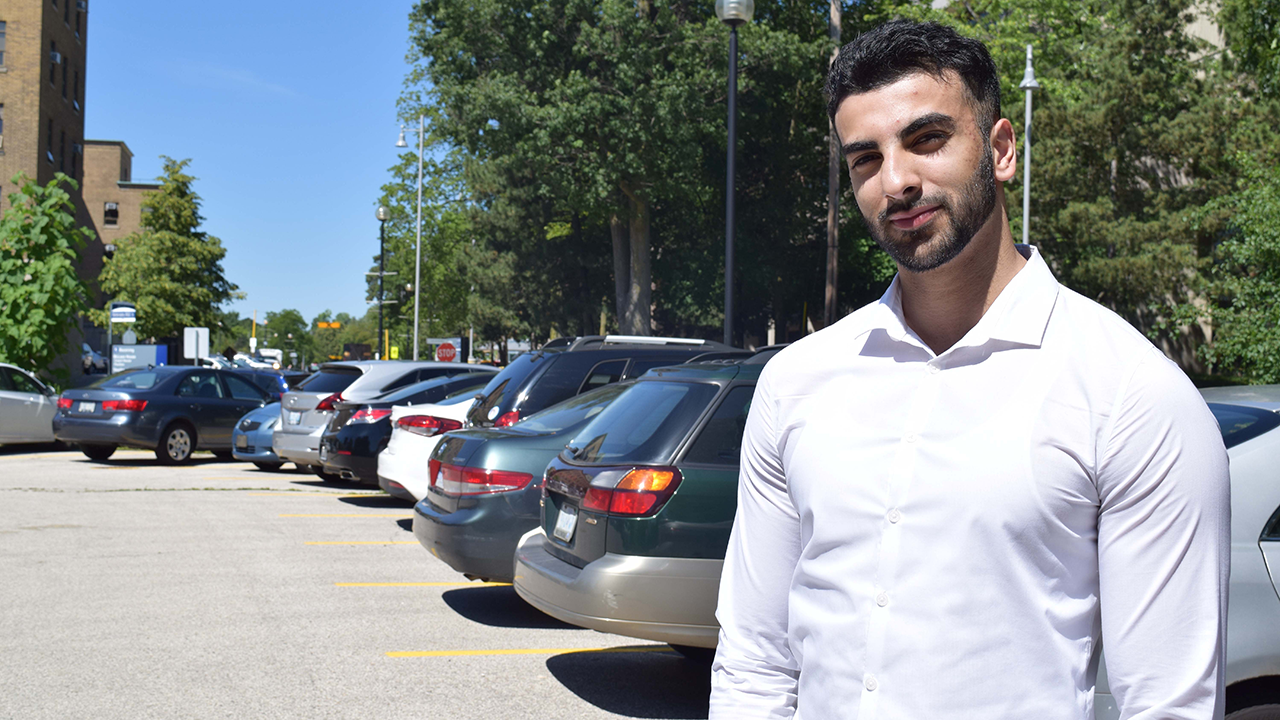The wonder of automated technology
From a young age, Saad Ali loved to build things. His interest in problem solving led him to pursue engineering with the goal of a career in the automotive industry.
A referral from a friend put Ali in contact with Dr. Junaid Bhatti, a scientist in the Trauma, Emergency & Critical Care (TECC) Research Program at Sunnybrook Research Institute (SRI). Bhatti’s research focuses on the effects of human factors on driving performance and crash risks.
“The opportunity was perfect for me,” says Ali, a third-year mechanical engineering student at Ryerson University in Toronto, Ont. Ali was subsequently accepted into the D+H SRI Summer Student Research Program. “I was intrigued by the TECC program. I wanted to gain insight in a multidisciplinary field and use my engineering rigor to improve survival and quality of life.”
The aim of his project is to assess how Canadian consumers perceive automated collision avoidance technology that is being incorporated into new cars. The collision avoidance system is a safety feature designed to reduce the severity of a car crash via the use of laser beams and radar waves surrounding the vehicle. These sensors warn the driver before a potential collision occurs or, in some cases, trigger an automatic response without the driver’s input by braking or steering.
“I’m conducting research to enhance safety in vehicles and develop new technology that could potentially save lives from fatal collisions,” says Ali. “I wish for consumers to gain an awareness of the benefits of collision avoidance technology and appreciate the engineering behind it.” He is also looking at whether drivers are aware of the existing technology and would consider buying a new vehicle with it.
Using a database that includes all fatal collisions reported in the U.S., Ali has found the number of car crashes is decreasing since the introduction of collision avoidance systems made standard in car models like Mercedes-Benz C-Class and S-Class, and Volvo S60 and XC60.
“I’m studying automatic emergency braking, which is arguably the most effective technology, and its capacity to prevent rear-end, head-on, angle and non-motor collisions with other vehicles,” he says. “I have found that the number of aforementioned collisions decreased 69% when it became optional and 87% when it became standard.”
To help generate more data, he is developing a questionnaire that will inquire about a consumer’s prior knowledge about and practices with using these technologies. “I’m currently making the survey through SurveyMonkey. Once that is completed, I will go to various car showrooms and explain our research to management and ask for their permission to collect data,” says Ali. “Once the data has been collected, we will see if we have come to an inference and then proceed further to summarize our findings.”
Ali also referenced an article published by the Insurance Institute for Highway Safety that showed the majority of Honda drivers did not have their lane departure warning and forward collision warning systems activated. Ali and Bhatti suspect drivers may not be aware of the technology features or manually turn them off because they are distracting or annoying.
“If drivers are turning the features off, this proves our hypothesis that drivers are uninterested in vehicle collision avoidance systems and are unwilling to spend the extra buck on these safety features,” he says.
This research matters because it will help manufacturers develop a better understanding of consumer preference and promote safety with crash avoidance and automation technologies notes Ali. “Dr. Bhatti and I want people to be informed of these technologies, so that when they are buying their new vehicle, they are being told of these features, so it doesn’t come as a surprise when it activates for the first time,” he says.
Ali’s dream job is to work for Tesla and create a fully automated car that requires zero input from the driver. “I’m a fan of the vehicle engineering behind Tesla, such as electric power train vehicle and its battery technology,” he says. Until then, he wants to complete his summer project and gain knowledge to promote safety in cars. “This will save lives,” he says, “and I want to make sure the roads are safe before a new level of automation is ready to be released.”
Saad Ali received a D+H Summer Studentship Award.






